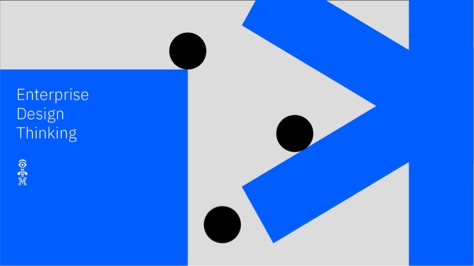SUMMARY
Purpose: Big Ideas is a structured ideation method that drives quantity and quality of design concepts in early-stage product thinking.
Design Thinking Phase: Ideate
Time: 45–60 min session + 1–2 hours analysis
Difficulty: ⭐⭐
When to use:When your team is stuck solving a problem in a predictable wayTo generate a range of divergent ideas before committing to design directionsWhen you need to reframe a challenge with fresh mental models
What it is
Big Ideas is a collaborative ideation method that encourages rapid, broad, and sometimes extreme exploration of design possibilities. It helps teams suspend judgment and imagine future-facing solutions beyond functional constraints. The method balances divergent thinking with strategic framing to ensure ideas align to real user problems.

Why it matters
Even the most experienced teams can fall into the trap of incremental thinking. Big Ideas creates intentional time and space to pause execution, challenge assumptions, and explore radically different possibilities. It helps avoid premature convergence on tired solutions by surfacing wild, risky, and transformative ideas that can later be shaped and validated.
When to use
- After research synthesis to convert insights into concept directions
- When stakeholder feedback suggests your current direction lacks innovation
- In design sprints where breadth of thinking is strapped for time
Benefits
- Rich Insights: Helps uncover user needs that aren’t visible in metrics.
- Flexibility: Works across various project types and timelines.
- User Empathy: Deepens understanding of behaviours and motivations.
How to use it
Follow this step-by-step process to lead a Big Ideas session within your team:
- Frame the challenge: Translate a user or business need into a “How Might We…” statement. Keep it open-ended to invite unexpected answers.
- Set the rules: Clarify that there are no bad ideas. Encourage fluency (many ideas), flexibility (categories), and originality.
- Structure the prompts: Use creative constraints such as “10x the impact”, “Design for the opposite”, “Remove the screen”, or “What would Amazon do?”.
- Rapid ideation: Timebox 2–3 rounds of solo sketching or list-making. Use sticky notes or digital boards to share ideas anonymously or in real time.
- Cluster and identify themes: Group similar ideas and identify standout concepts. Use affinity mapping and dot voting to guide the next step.
- Reflect and prioritise: Discuss feasibility, alignment to user needs, and potential to prototype. Highlight ideas worth developing further.
Example Output
- Challenge: “How might we help people stay financially healthy between pay cycles?”
- Big Ideas:
- A dopamine-based budgeting app that gamifies restraint like a fitness tracker
- Bank accounts that generate personalised spending nudges via AI
- A payment card that restricts non-essential purchases based on self-declared goals
- An expense-sharing subscription between friends who co-budget monthly
Common Pitfalls
- Too much evaluation too early: Don’t judge ideas during the brainstorm. Save critique for the selection phase.
- Vague challenge framing: Poorly scoped “How Might We” statements lead to irrelevant or shallow ideas. Invest time validating the problem statement.
- Lack of psychological safety: Team members avoid sharing bold ideas if they fear criticism. Set ground rules up front.
10 Design-Ready AI Prompts for Big Ideas – UX/UI Edition
How These Prompts Work (C.S.I.R. Framework)
Each of the templates below follows the C.S.I.R. method — a proven structure for writing clear, effective prompts that get better results from ChatGPT, Claude, Copilot, or any other LLM.
C.S.I.R. stands for:
- Context: Who you are and the UX situation you're working in
- Specific Info: Key design inputs, tasks, or constraints the AI should consider
- Intent: What you want the AI to help you achieve
- Response Format: The structure or format you want the AI to return (e.g. checklist, table, journey map)
Level up your career with smarter AI prompts.Get templates used by UX leaders — no guesswork, just results.Design faster, research smarter, and ship with confidence.First one’s free. Unlock all 10 by becoming a member.
Prompt Template 1: “Generate 10 innovative concepts fast”
Generate 10 innovative concepts fast
Context: You are a UX designer working in a cross-functional ideation workshop for a new [feature/product/service].
Specific Info: The challenge is framed as “How might we [improve/support/enable] [user behaviour or goal] for [target user segment]?”
Intent: Generate extreme, lateral, and unexpected ideas that could lead to differentiated product directions.
Response Format: Return 10 concise, divergent ideas categorised by design angle (e.g. behavioural, experiential, systemic, speculative).
Ask if challenge framing is unclear before responding.
Then, suggest one follow-up method to prioritise or develop the ideas.



